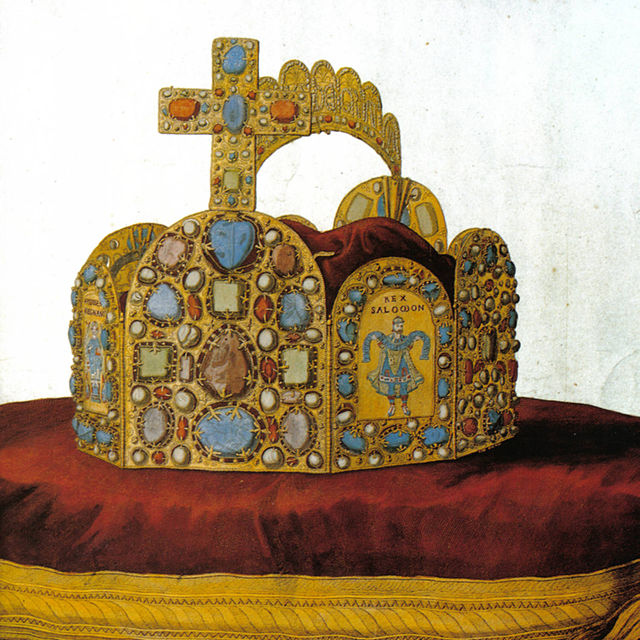Imperial Crown of the Holy Roman Empire
The Imperial Crown of the Holy Roman Empire, a hoop crown with a characteristic octagonal shape, was the coronation crown of the Holy Roman Emperor, probably from the late 10th century until the dissolution of the Holy Roman Empire in 1806. The crown was used in the coronation of the King of the Romans, the title assumed by the Emperor-elect immediately after his election. It is now kept in the Imperial Treasury at the Hofburg in Vienna, Austria.
Imperial Crown of the Holy Roman Empire
Charlemagne wearing the Imperial Crown, by Albrecht Dürer, c. 1512, Germanisches Nationalmuseum in Nuremberg. The picture is anachronistic, since the crown was made a century and a half after Charlemagne's death.
The front right plate shows Jesus with two angels
Front view
A hoop crown, arched crown, or closed crown, is a crown consisting of a "band around the temples and one or two bands over the head". First used by the Carolingian dynasty, hoop crowns became increasingly popular among royal dynasties in the Late Middle Ages, and the dominant type of crown in the Modern Era.
Hoop crown of the Holy Roman Empire
Hoop crown on the late Gothic Bust of Charlemagne, Aachen Cathedral Treasury






